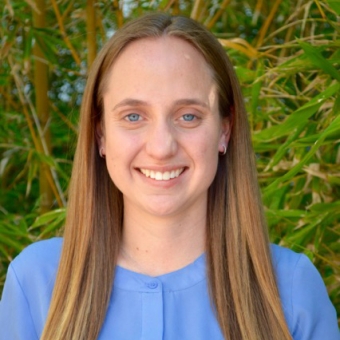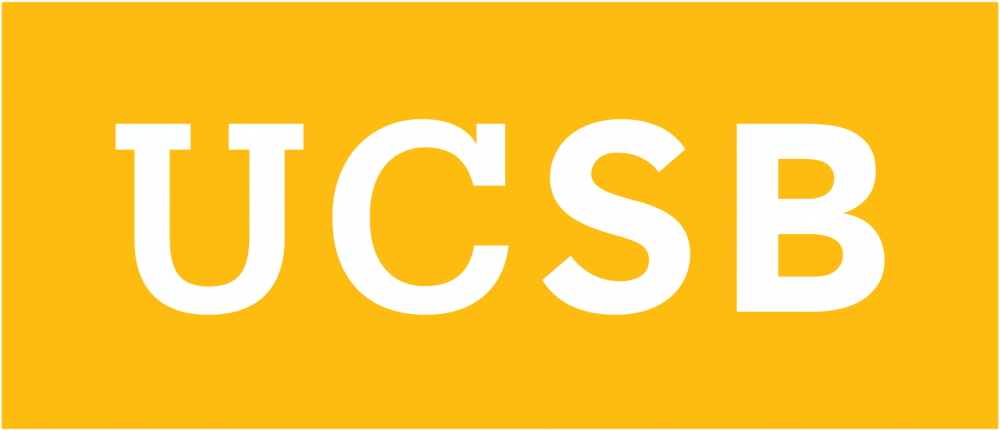
Graduate Student Alexandra Bayles of the Helgeson and Squires Labs was one of two students awarded a CSP Technologies Teacher-Scholar Fellowship for 2016-2017. In addition, Alexandra was recently selected to attend the 67th Lindau Nobel Laureate Meeting on Chemistry in Germany this summer. This is a highly competitive honor, with only 400-500 international young scientists selected to attend and present their research. We asked Alexandra a few questions about her research, what got her interested in teaching, and advice she has for high school students and undergrads interested in a similar path. Read on to see what she had to say!
What is your area of study?
Generally, I study complex fluids and new methods for characterizing them.
What kind of projects or research are you currently working on? What do you find most exciting about it?
I’ve had the opportunity to work on multiple projects at UCSB under my advisors, Profs. Matt Helgeson and Todd Squires. One of my main projects studies multicomponent diffusion in ionic liquids (ILs). Diffusion of ions and small molecules is notoriously difficult to model in ILs, since they are highly-charged, often nanostructured fluids. In my research, we’ve employed a new experimental technique called microfluidic interferometry to measure concentration-gradient driven diffusion in ILs. We’ve used the results obtained using technique to develop and refine various models of molecular transport. This project has allowed me to use experiments and theory to inform one another, and thereby leverage both into more accurate models. I find the work particularly exciting because a broad range of applications benefit from fundamental insights. If we can develop a better mechanistic understanding of how ions and molecules move in different ILs, then we can begin to rationally design them for different separation processes, homogeneous catalysis processes, and electrochemical devices.
What got you interested in teaching? What have you learned so far from teaching an undergraduate class? What do you hope to get out of the experience?
I became interested in teaching during high school, where I was fortunate to have exceptional STEM teachers that exuded passion for the subjects they taught. Through high school research internships, I was able to work with PIs and graduate students that were similarly excited about their research. These mentors were inspiring, and ultimately led me to pursue an engineering degree (during which I learned from equally enthusiastic professors). I’ve always found it remarkable how having one mentor or professor that you resonate with can change the course of your entire career. On account of the mentorship that I received, I want to do my best to help students figure out what fascinates them, and give them the tools they need to be successful in their careers. Admittedly, doing this while in the classroom is challenging! Teaching Heat Transfer and learning from Prof. O’Malley has shown me first-hand just how much goes into developing an effective engineering course. In my opinion, the best courses strike a balance between rigorously deriving analytical solutions and showing how to modify them to deal with practical problems. Doing this in a way that is logical and that doesn’t appear hand-wavy is difficult, and something that I want to improve upon. The best courses also communicate the main conclusions of a topic multiple ways. All of us learn and rationalize things slightly differently; framing topics in different contexts helps more students internalize the important results. During my lectures, I’ve tried incorporating benchtop heat transfer demos to cater to those that learn kinesthetically. Additionally, this teaching experience has made me hyper-aware of subtle things that affect clarity in a course. How you choose notation, how you annotate diagrams and graphs, and how you write problem statements can either reinforce concepts or completely confuse the class. All in all, I know I’ve learned a tremendous amount from the students, and for that I thank them!
Why did you choose to come to UCSB?
I chose to attend to UCSB so that I could conduct high-quality research in a collaborative environment. UCSB’s interdisciplinary culture pervades every aspect of research, and my work has benefited tremendously from it. Drawing on the diverse expertise of my coadvisors has allowed me to tackle problems in an original way. Working with group members that are coadvised by other faculty members keeps me up to date with progress in fields of research outside my own. Access to extensive shared user facilities have allowed me to employ several types of characterization in my research. Altogether, I think this environment fosters research that is truly novel.
If a high school or undergrad student wanted to do what you do today, what is the best way to get there? What advice do you have to offer for high school students or undergrads who are trying to figure out what they want to do?
I advise those that are interested in teaching to seek out opportunities to teach STEM early. As high schoolers and undergraduates, you can do this by tutoring, serving as a teaching assistant, and even volunteering in local science outreach programs. Tutoring and TAing will give you practice explaining technical concepts and help you determine whether you actually enjoy teaching. Participating in science outreach is a rewarding way to hone similar skills while serving your community. During high school, I volunteered as an instructor in a weekly afterschool science program that used fun, usually messy demos to get elementary schoolers excited about science. Through that experience, I practiced tailoring content (albeit simple content) for a particular audience, and also began to see first-hand what makes concepts click with different students. In terms of research, I also recommend getting involved as early as possible. Seek out opportunities for research in labs at your own school, or apply to REUs to determine if you want to continue research in your career.
Thanks, Alexandra!



